
A windmill is a structure that converts wind power into rotational energy using vanes called sails or blades, specifically to mill grain (gristmills), but the term is also extended to windpumps, wind turbines, and other applications, in some parts of the English speaking world. The term wind engine is sometimes used to describe such devices.
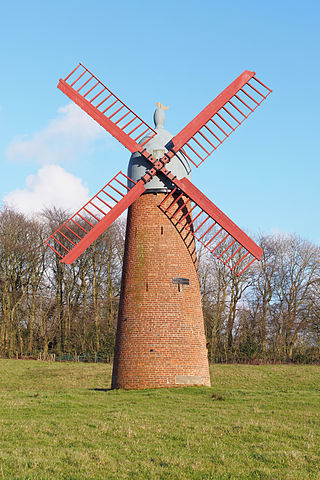
A tower mill is a type of vertical windmill consisting of a brick or stone tower, on which sits a wooden 'cap' or roof, which can rotate to bring the sails into the wind.

Herringfleet Mill or Walker's Mill is a Grade II* listed smock mill at Herringfleet, Suffolk, England, Now in a bad state of repair with two of the 4 sails removed.

Shirley Windmill is a Grade II listed tower mill in Shirley, in the London Borough of Croydon, England which has been restored to working order.

Union Mill is a Grade I listed smock mill in Cranbrook, Kent, England, which has been restored to working order. It is the tallest smock mill in the United Kingdom.

Swingate Mill is a Grade II listed tower mill in Guston, Kent, England that was built in 1849.
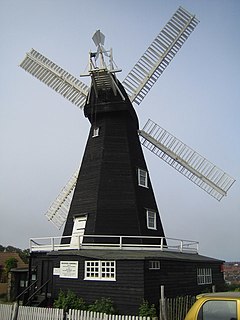
Draper's Windmill or Old Mill is a Grade II listed Smock mill in Margate, Kent, England that was built in 1845.

Oare Mill is a Grade II listed house converted Tower mill in Oare, Kent, England that was built in the late eighteenth or early nineteenth century.
Stanford Windmill is a Grade II* listed tower mill in Stanford, Kent, England that was built in 1857. It stands on Kennett Lane in Stanford.

Davison's Mill, also known as Stelling Minnis Windmill, is a Grade I listed smock mill in Stelling Minnis, Kent, England that was built in 1866. It was the last windmill working commercially in Kent when it closed in the autumn of 1970.
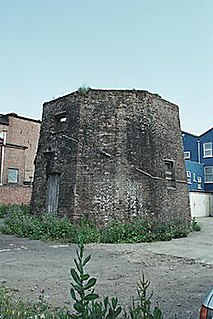
Great Mill or Ride's Mill is a Grade II listed smock mill just off the High Street in Sheerness, Kent, England, that was demolished in 1924, leaving the brick base standing. It now has a new smock tower built on it as residential accommodation.
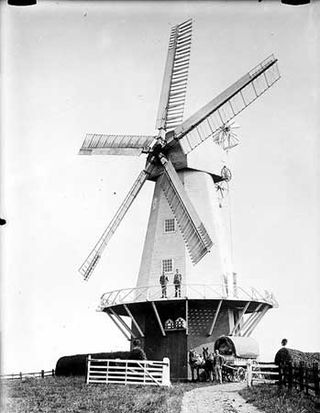
Ringle Crouch Green Mill is a smock mill in Sandhurst, Kent, England, that was demolished to base level in 1945, and now has a new smock tower built on it as residential accommodation and an electricity generator.
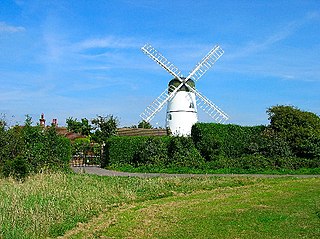
Waterhall Mill, also known as Westdene Windmill, is a grade II listed tower mill at Westdene, Sussex, England which has been converted to residential use.

Shiremark Mill, also known as Kingsfold Mill or Capel Mill was a listed Smock mill at Capel, Surrey, England, which was burnt down in 1972.

Stansted Mountfitchet Windmill is a grade II* listed Tower mill at Stansted Mountfitchet, Essex, England which is also a Scheduled Ancient Monument. It has been restored and can turn by wind.

Stock Windmill is a grade II* listed tower mill at Stock, Essex, which has been restored.
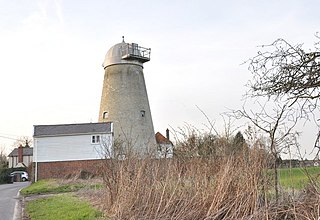
White Roding Windmill is a Grade II listed preserved tower mill at White Roding, Essex, England.
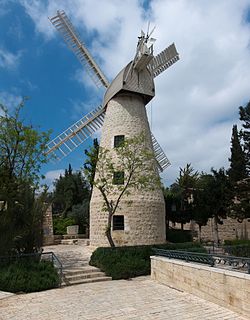
The Montefiore Windmill is a landmark windmill in Jerusalem. Designed as a flour mill, it was built in 1857 on a slope opposite the western city walls of Jerusalem, where three years later the new Jewish neighbourhood of Mishkenot Sha'ananim was erected, both by the efforts of British Jewish banker and philanthropist Moses Montefiore. Jerusalem at the time was part of Ottoman-ruled Palestine. Today the windmill serves as a small museum dedicated to the achievements of Montefiore. It was restored in 2012 with a new cap and sails in the style of the originals. The mill can turn in the wind.

Thorpeness Windmill is a Grade II listed post mill at Thorpeness, Suffolk, England which was built in 1803 at Aldringham and moved to Thorpeness in 1923. Originally built as a corn mill, it was converted to a water pumping mill when it was moved to Thorpeness. It pumped water to the House in the Clouds.
Mill Lane Mill is a Grade II listed tower mill at Carbrooke, Norfolk, England which has been conserved with some machinery remaining.



















